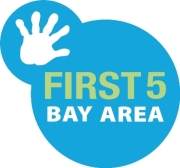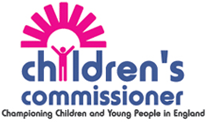“Early childhood investments pay dividends for the life of the child. Each dollar invested returns $60 to $300 over a child’s lifetime.”
– James Heckman, Nobel laureate economist
Great Schools Make Great Kids, but It Also Takes:
Strong Parenting, Positive Mentors, Healthy After School Activities
Support for children has focused on K-12, yet what a child does before they arrive at kindergarten, what they do after school, and what they do to afford college all matter in the end. Chris calls for small investments that the state can make to ensure we support the whole child through a systems approach. If a child is our focus, then each stage of a child’s life is important.


Every lawmaker should read David Kirp’s work. Click on the book cover for a Talks at Google with Kirp
Chris Chiang’s 6-Part Investment to Support a Whole Child
Chris’s 6-part investment, in part modeled off the research of David Kirp of the Berkeley Goldman School of Public Policy.
How to Pay For This?
These are not all things that can be funded right away. The strategy is to fund children programs as state revenue recovers. Rather than restoring less important programs like adult welfare and prison funding that have already been cut, use any future increases in revenue to invest in our children. This includes not funding new services that won’t have the same return on investment, like high speed rail.
It is ineffective state policy for us to be willing to invest $8,000+ a year in a child once they are in kindergarten, but refuse that same child support during the ages 1-5, where unequivocally research shows intervention is most successful and cost effective. It is equally foolish for us to invest $100,000 in each child over their thirteen years of public education, only to quit at the last step by denying them access to college. We all have a financial stake in seeing each child succeed at the very end.

Part 1: Ensuring Policy Focuses on Children, Not Stages of Life
Chris Chiang proposes a bill to create the position of California Children’s Commissioner (kids czar) in the governor’s office, who will place children first. The commissioner’s primary duty will be to get all the different federal, state, local, non-profit children’s programs, and the children themselves to all work together to improve our care for kids. This will reduce bureaucracy and save money by eliminating overlapping services. We need to increase the collaboration that happens between day care and preschool advocates, high schools and community colleges, and other groups that have historically dealt with stages of life, rather than whole children. The first step will be to create a children legislative caucus to bring together legislators who want to work to put kids first.
Part 2: Investing in a Child’s College Future
Similar to a program initially suggested by Republican former Senator Rick Santorum, Chris proposes a plan to provide up to 1.8 million children a $250 dollar tax-free college-career account. For every dollar a family contributes, the state will match that dollar up to $250 a year. So if a parent saves $250 for their child’s future (less than $5 dollars a week), the child will have $500 added to his/her college-career account.
Once children are of school age, students themselves will deposit their contributions through the schools, where they will receive their savings statements that shows: their interest earned, projected cost of state college, and financial aid estimates. Over time they will see their savings and the cost of college come ever closer. This will revolutionize student financial literacy. If families continue giving $5 a week for 18 years, the total will be $15,000 dollars (5% interest rate). While contributions stop once they turn 18, if they do not use their college-career fund, it can be transferred to their children, with interested earned, where that child can begin matching funds. This becomes a second chance at ending a cycle of poverty.
Part 3: Turning Schools Into Community Centers
Schools are frequently a community’s largest public resource, yet many are lightly used outside of regular school hours or during vacations. Schools do not have the staffing to coordinate outside groups after hours. New research into community schools reveal its powerful effect.

After school cooking competition, click on the image to learn about the community schools operating in NYC.
Chris proposes offering schools a chance to elect two parents to be after school program coordinators. These two parents will volunteer their time to see if the school can host after school groups in addition to, not in competition of, any existing after school activities. While the coordinators will be volunteers, they will be given an average annual $10,000 grant to help with expenses (these are not salaries). There will also be limited liability protection provided to insure these after school activities.
Chris’s plan will offer training to each volunteer in such topics as corporate fundraising and project management. The types of activities that could be brought on to campuses are endless: whether it be high school students running a book club at their nearby elementary school, a church group running non-religious late night basketball, or a local health care provider offering school site family services.

The message such a package sends is as important as its content: that the community cares for your child.
Part 4: Offering Parents Baby Help Packages
In Finland each parent is offered a baby help package worth over $100 dollars. This package includes parenting videos, baby books, and commonly used baby items. In fact California also offers a limited baby help package through First 5. Finland’s baby kit focuses too much on commercial baby items and First 5’s contents rely too much on instructional material, some of which is of limited relevance to new parents.
Chris Chiang proposes a baby package of $25 dollars, supplemented by private partnerships that focus on early childhood development, particularly breast feeding. It is undisputed that breast feeding increases infant wellness. It is also undisputed that breastfeeding is not easy for new mothers, which is why many mothers quit. The Journal of Pediatrics reports the country would save $13 billion if more mothers breastfed the baby’s first six months. Affluent parents can afford to hire help and purchase specialized items. A small investment in every new parent conveys that their baby is important to the state and will in the end save the public money. Parents will have the option to decline the package as they do in Finland.
The content of Chris’s baby kit would be decided by a panel of doctors, but would likely include the following:
Nursing cover
Nursing lanolin
Swaddle with instructions
Baby board book
Baby parent participatory music and games CD
Child development book and DVD
Information on postpartum depression
List of local baby groups, classes, and support agencies
Part 5: Providing Support For the Critical Early Years
In California, there is limited free help for the early years of parenting. Chris proposes a program that will staff an early childhood expert in each community across the state (80 total) working under CA First 5 (San Mateo, Santa Clara). These experts will provide workshops at schools, churches, and neighborhood meetings on topics like breastfeeding, sleep help, child behavior, and learning delays. These experts will also work to expand the skill sets of community leaders that work frequently with new parents, such as: teachers, religious leaders, and police officers. They will also work to connect parents to the other resources at First 5 and existing local non -government groups like Blossom Birth.

In 1998, First5 was created to support parents, yet many parents are not aware of the resources they have to offer. What’s missing are experts working inside our neighborhoods.
In South Carolina, a similar program paid for itself in fewer children needing medical attention and future services. Unlike South Carolina’s program, Chris’s program will focus solely on the parenting support for the earlier years, where research shows it brings the most long-term gain.
Part 6: Free Way of Expanding the Number of Adult Mentors for Children
There are 5 million senior citizens in California. Chris proposes a bill that will allow seniors who are renewing their driver’s licenses to check a box on the form to share their contact info with community groups that place mentors with children.




